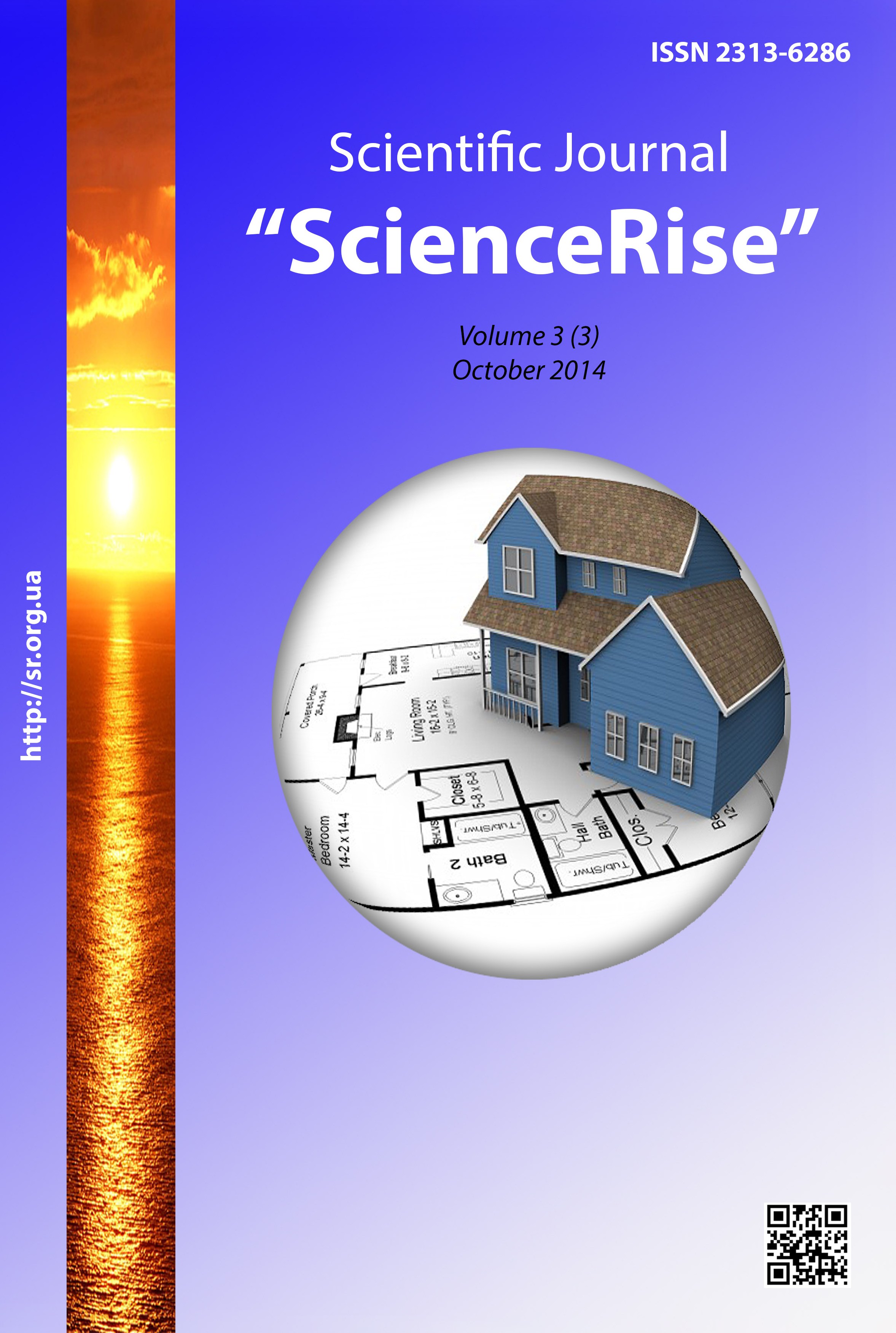Диагностика засухоустойчивости сортов пшеницы разной селекции по осморегуляторным свойствам семян
DOI :
https://doi.org/10.15587/2313-8416.2014.27463Mots-clés :
Triticum aestivum L., сорт, засухоустойчивость, осмотическое давление, интенсивность корнеобразования, линейный ростRésumé
Семена озимой пшеницы сортов Краснодарская 99, Эпоха одесская в условиях высокого осмотического давления сохраняют существенную способность к прорастанию. Интенсивность корнеобразования, роста зародышевых корней и стеблей в длину у проростков снижается у всех сортов с повышением концентрации сахарозы. Сорт Наталка в меньшей степени подвержен отрицательному воздействию осмоса, что проявляется в сохранении высокой всхожести семян, снижении угнетения, роста корней и стеблей проростков.
Références
Kushnirenko, M. D. (1989). Water metabolism in plants under different water availability due to drought tolerance and productivity: Water exchange of agricultural plants. Chisinau. Shtiintsa, 229. (In Ukrainian). 2. Lebedev, G. V. (1989). Water scarcity and agricultural production. Leningrad. Chemistry, 320. 3. Zhuk, O. I., Grigoruk, I. P., Varavkin, V. O., Bulah, A. A., Dadusha, L. M., Dulnev, P. G. (2001). The growth reaction of winter wheat seedlings on temperature stress and treatment by substance “Dimex”. Physiology and biochem. the cult. plants., 33 (6), 485–489 (In Ukrainian). 4. Varavkin, V. O. (2001). The growth of winter wheat seedlings after exposure to heat stress and potassium Humate. Scientific reports NUBIP, 2(24), Available at: http://www.nbuv.gov.ua/ejournals/Nd/2011_2/11vvo.pdf (In Ukrainian). 5. Varavkin, V. O. (2011). The dependence of the growth response of seedlings of winter wheat from the effects of temperature stress and treatment etamon. Visnyk agraro science, 11, 30-32 (In Ukrainian). 6. Zhuk, O. I., Grigoruk, I. P., Varavkin, V. O., Bulah, A. A., Dadusha, L. M., Dulnev, P. G. (2002). The influence of the drug "Hart" on the growth of winter wheat seedlings after thermal stress. Physiology and biochem. the cult. Plants, 34, 58–62 (In Ukrainian). 7. Mamenko, T. P. (2009). Water status and productivity of winter wheat under the effect of drought and salicylic acid. Physiology and biochemistry of the cult. Plants, 41 (5), 447–453. (In Ukrainian). 8. Ivanov, A. A. (2013). The combined effect of water and salt stress on photosynthetic activity of leaves of wheat of different ages. Physiology and biochemistry of the cult. Plants, 45 (2), 155–163. (In Ukrainian). 9. Lukatkin, A. S., Cherkaeva, A. S, Aparin, S. V. (2010). Growth response of the cone cells of the growing heat-loving plants under the effect and aftereffect low temperatures. Physiology and biochemistry of the cult. Plants, 42 (3), 256–269. (In Ukrainian). 10. Major, P. S. (2010). The relationship between the content of free proline, soluble sugars and water content tissues in plants of winter wheat during the autumn-winter period. Physiology and biochemistry of the cult. Plants, 42 (4), 298–305. (In Ukrainian). 11. Adamovskaya, V. G., Molodchinkova, A. A., Belousov, V. M., Sokolov, O. V., Tikhonova O. V., Popov S. P., White, L. Y., Yakimenko I. A. (2010). Activity of cell wall lections and nitrate reductive in maize seedlings under the effect of water deficit and hyperthermia. Physiology and biochemistry of the cult. Plants, 42 (4), 331–338. (In Ukrainian). 12. Baker, J., Van denn Steele, C., Dure, L. (1988). Sequence and characterization of 6 Lea proteins and their genes from cotton. Plant Molecular Biology, 11 (3), 277–291. doi:10.1007/bf00027385 13. Bostock, R. M., Quatrano, R. S. (1992). Regulation of Em Gene Expression in Rice: Interaction between Osmotic Stress and Abscisic Acid. PLANT PHYSIOLOGY, 98 (4), 1356–1363. doi:10.1104/pp.98.4.1356 14. Bray, A. E. (1993). Molecular responses to water deficit. Ibid, 103 (5), 1035–1040. 15. Oleinikova, T. V., Osipov, Û. F. (1976). Determination of drought tolerance in wheat and barley lines and hybrids of maize for seed germination on sucrose solutions with high osmotic pressure. Methods for evaluating the resistance of plants to adverse environmental conditions, 23–32. 16. Shevelukha, V. S., Springer, M. A. (1976). Mushroom SR methods of selecting the high-yielding barley plants at the first stage of organogenesis. Howto. Moscow, 32. 17. Dospehov, B. A. (1976). Methods of field experience. Moscow. Agropromizdat, 351.
Téléchargements
Publié-e
Numéro
Rubrique
Licence
(c) Tous droits réservés Владимир Алексеевич Варавкин, Наталия Юрьевна Таран 2014

Cette œuvre est sous licence Creative Commons Attribution 4.0 International.
Our journal abides by the Creative Commons CC BY copyright rights and permissions for open access journals.
Authors, who are published in this journal, agree to the following conditions:
1. The authors reserve the right to authorship of the work and pass the first publication right of this work to the journal under the terms of a Creative Commons CC BY, which allows others to freely distribute the published research with the obligatory reference to the authors of the original work and the first publication of the work in this journal.
2. The authors have the right to conclude separate supplement agreements that relate to non-exclusive work distribution in the form in which it has been published by the journal (for example, to upload the work to the online storage of the journal or publish it as part of a monograph), provided that the reference to the first publication of the work in this journal is included.

